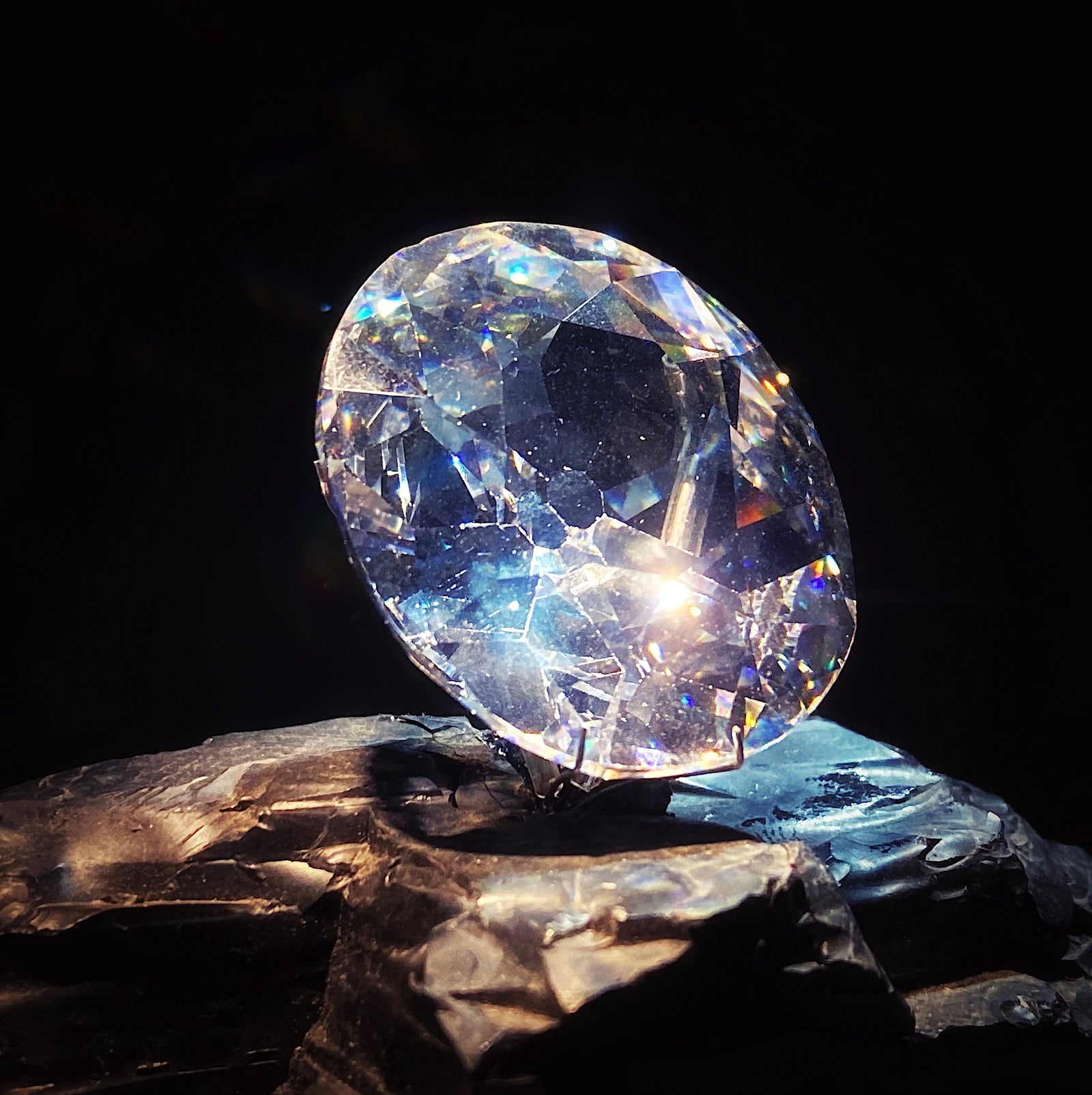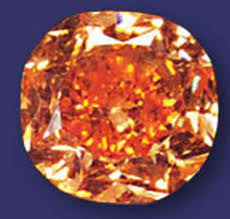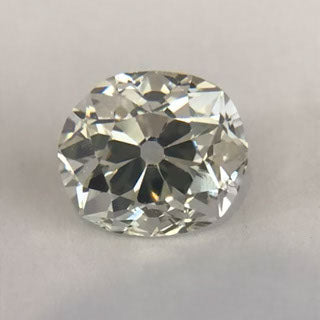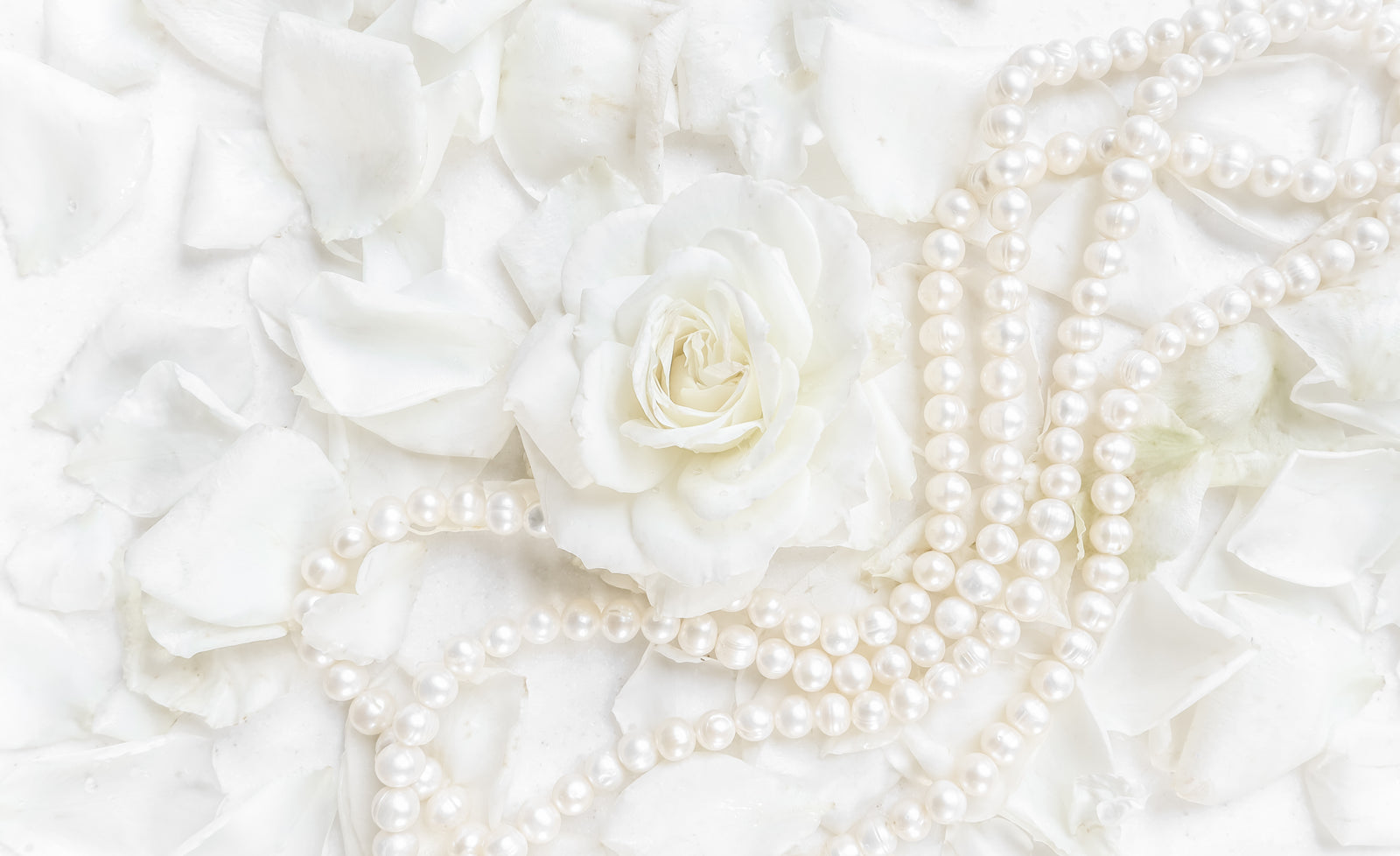(Photo: https://www.flickr.com/photos/aiva/49820769116/)
The Koh-i-Noor diamond is undoubtedly the most famous in the world despite not being the largest or most valuable. The diamond is famous because of its illustrious and somewhat infamous past that weaves history, myth, and lore into the most compelling story of any diamond.
It is said that the daughter of a poor elephant keeper was playing on the banks of the Yamuna River (1 of 7 sacred rivers in India) where she found a child clad in golden armor with a dazzling “stone of light” affixed to his forehead. The child’s name was Karna, son of Surya, the Sun God. Karna was admitted to the royal court and raised with the King’s son as a member of the royal family. The conflict would soon break out between the King’s immediate family and their cousins, the Pandavas. The conflict would give way to war. Young Karna was fearless due to the belief that the diamond that adorned his forehead made him invincible, so he challenged a Pandavas cousin to one-on-one combat. However, divine intervention on the part of Krishna himself resulted in the slaying of young Karna.
After the battle, a young girl found the diamond and took it to the Temple
of the God Siva. A Brahmin, or priest, affixed the stone to the forehead of a large statue of Siva where it became the “third eye” or eye of illumination for Siva. For hundreds of years, the diamond cast its illumination throughout the Temple which was closely guarded by the Temple priests. According to legend, a thief who intended to steal the diamond hid in the Temple at night. The next morning when the Temple doors opened the priests found him dead inside. The Brahmins reportedly said
“He who possesses this diamond will possess the world.
But he will also experience the worst misfortunes, for only
a God or a woman can wear it with impunity”.
The first written record of the diamond came in 1304 when it was listed as
being the property of the rajah of Malwa. For the next two centuries, there was no mention of the diamond until Baber, who ruled over present-day Pakistan, invaded Punjab, seized Lahore, and in 1526 founded the Great Mughal dynasty. To save herself, the widow of the vanquished sovereign of Punjab offered gifts (spoils of war) to Baber including this most extraordinary diamond whose value was estimated to be “one day of the whole world’s expenditures”.
For two centuries the stone remained in the possession of the Mughal
emperors including Shah Jahan (1628-1658) who built the Taj Mahal. In 1738, reigning emperor Muhammad Shah (grandson of Shah Jahan) saw his kingdom invaded by Turkish General Nadir Shah, who had recently seized the Persian throne and made Isfahan (in current Iran) his capital. On February 13, 1739, Muhammad Shah was defeated by Nadir Shah. Nadir Shah seized vast quantities of loot (reportedly 10,000 wagons filled with loot!) including the famous jewel-encrusted Peacock throne which to this day remains part of the Iranian State Treasure. Despite all the seized treasures, Nadir Shah could not find the diamond. Muhammad Shah’s neglected first wife revealed to Nadir Shah that the defeated
leader kept the diamond hidden inside his turban. In this part of the world, there was an ancient custom of exchanging turbans as a sign of respect, so Nadir Shah invited the defeated Muhammad Shah to a feast at which Nadir Shah suggested they exchange Turbans. Muhammad Shah could not refuse and thus Nadir Shah obtained the diamond. Upon seeing the diamond for the first time, Nadir Shah is reported to have exclaimed “Koh-i-Noor!”, which is Persian for “Mountain of Light”. And so the diamond received its name.
Nadir Shah was killed in 1747 and his empire fell into disarray. Following
his death, 4 kings ascended to the throne in as many years. The fourth king had his predecessor, Shah Rukh, blinded and tortured in hopes he would reveal the whereabouts of the Koh-i-Noor but Shah Rukh resisted even the most excruciating punishments. Ahmed Shah Durani seized the throne of Afghanistan and in 1751 decided to intervene in Persian affairs by invading. The purpose of the invasion was to bring order to the empire built by the late Nadir Shah that now lay in tatters. Ahmed Shah Durani freed Shah Rukh who presented Durani with the Koh-i-Noor as a token of gratitude.
After the death of Ahmed Shah Durani, rancor and infighting broke out
between his grandsons with one grandson, Shah Shuja Durani, being imprisoned by his brothers to obtain the location of the Koh-i-Noor. Shah Shuja Durani never revealed the location of the diamond (reportedly he pressed it into a mud wall of his prison cell) so when he was later exiled from Kabul, he took the diamond with him.
Shah Shuja Durani found refuge and asylum in Punjab with the Maharaja
Ranjit Singh, founder of the Sikh empire. Ranjit Singh wanted to purchase the diamond from Shuja Durani and since Shuja Durani was hardly in a position to argue, he gave the diamond to Ranjit Singh. Ranjit Singh had the stone examined by his jewelers for two days to ensure that it was real before he sent 125,000 rupees to Shuja as payment. Later, Ranjit Singh would ask Shuja’s wife to estimate the value of the diamond. She replied that if a strong man threw a stone to the north, another to the south, another to the east, another to the west, and another vertically into the sky, the diamond would be worth more than that entire space filled with gold. This fed Ranjit Singh’s paranoia regarding
the Koh-i-Noor being stolen so much that he kept it under constant armed guard. When he transported the diamond it was done in a caravan of 40 identical camels with Ranjit Singh’s treasurer being the only one who knew which camel carried the diamond (it was always the first camel).
Ranjit Singh died in 1839 leaving his kingdom to his sons. After 3 of his sons were killed in quick succession, the kingdom fell to his youngest son, 5-year-old Duleep Singh, in 1843. Duleep Singh would become the last Indian Sovereign to own the Koh-i-Noor. In 1849, the British (East India Company) fought against Duleep Singh’s forces and won the Second Anglo-Sikh War, and annexed the Sikh kingdom of Punjab. Then 11 year old Duleep Singh had his commander-in-chief sign the Treaty of Lahore which relinquished the Sikh throne and the Koh-i-Noor diamond. Article III of the treaty states;
“The gem called the Koh-i-Noor, which was taken from Shah Sooja-
ool-moolk by Maharajah Runjeet Singh shall be surrendered by the
Maharajah of Lahore to the Queen of England"
The Koh-i-Noor diamond was officially presented to Queen Victoria on July 3, 1850, at Buckingham Palace by the deputy chairman of the East India Company. The date corresponded to the company’s 250th anniversary.
The diamond was presented to the British public at the Great Exhibition in
the Crystal Palace in 1851. At first, the 186-carat diamond was displayed in a gilded birdcage but after complaints about the diamond’s dull appearance, it was displayed on black velvet with gas lamps shining on it. Still, it failed to impress. The following year, Queen Victoria’s husband Prince Albert decided to have the diamond recut. The high domed flat base diamond would be recut into an oval brilliant cut diamond and its weight would be dramatically reduced from 186 carats to 105.6 carats.
Queen Victoria would wear the recut Koh-i-Noor in a honeysuckle brooch
and a circlet. The Queen was superstitious and believed the ancient Indian curse that only women and Gods could wear the diamond with impunity. So in her will, Queen Victoria asked that only female sovereigns and consorts be allowed to wear the diamond. After Queen Victoria’s death, the Koh-i-Noor was set in the crown of Queen Alexandra, wife of Edward VII. In 1911 the diamond was reset into Queen Mary’s crown and then again in 1937, it was reset into the crown of Queen Elizabeth, the Queen Mother. To this day, it has never been worn by a male member of the British Royal family.
May 6, 2023, will mark the coronation of King Charles III and Queen Consort Camilla. Due to the diamond’s infamous past and controversy over claims of ownership, early reports suggest that Camilla will not have the Koh-i-Noor incorporated into her crown. Nevertheless, people around the world will be celebrating the coronation of the new Monarch by watching it live, going to their favorite pub, or dining on that quintessentially British dish, “Fish & Chips”. We at Howard’s Diamond Center will observe the coronation week of King Charles III by displaying 2 antique diamond tiaras in our store. So if you are at “The Highlands”, please stop in to view the diamond tiaras and to join us as we watch the coronation on the “Telly”.
























